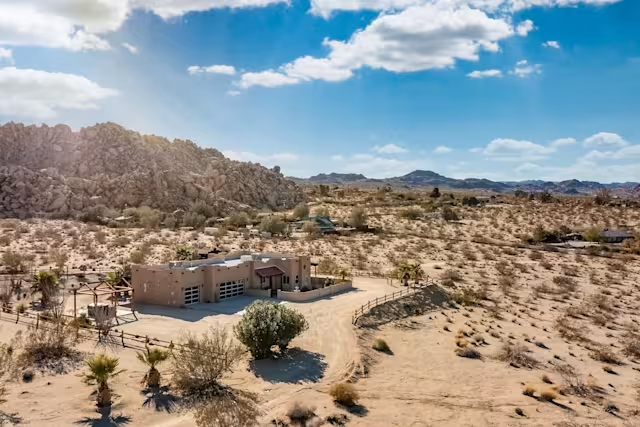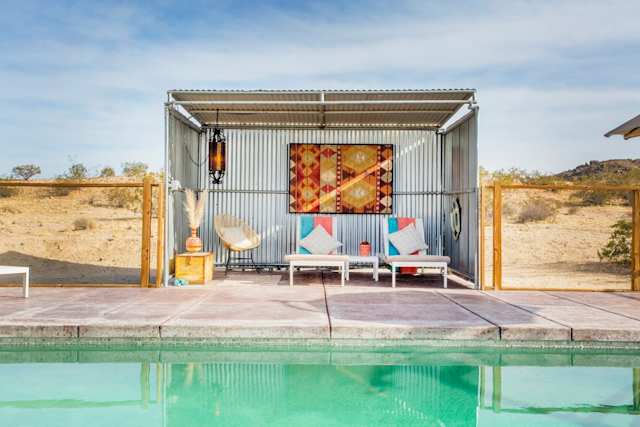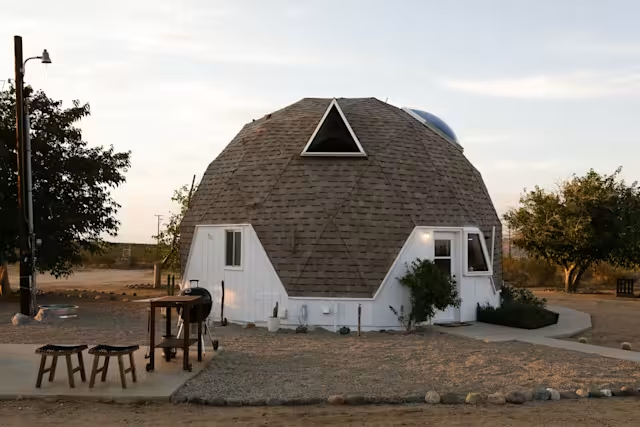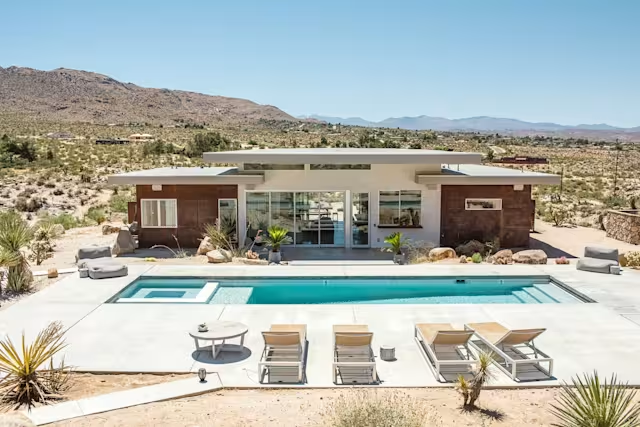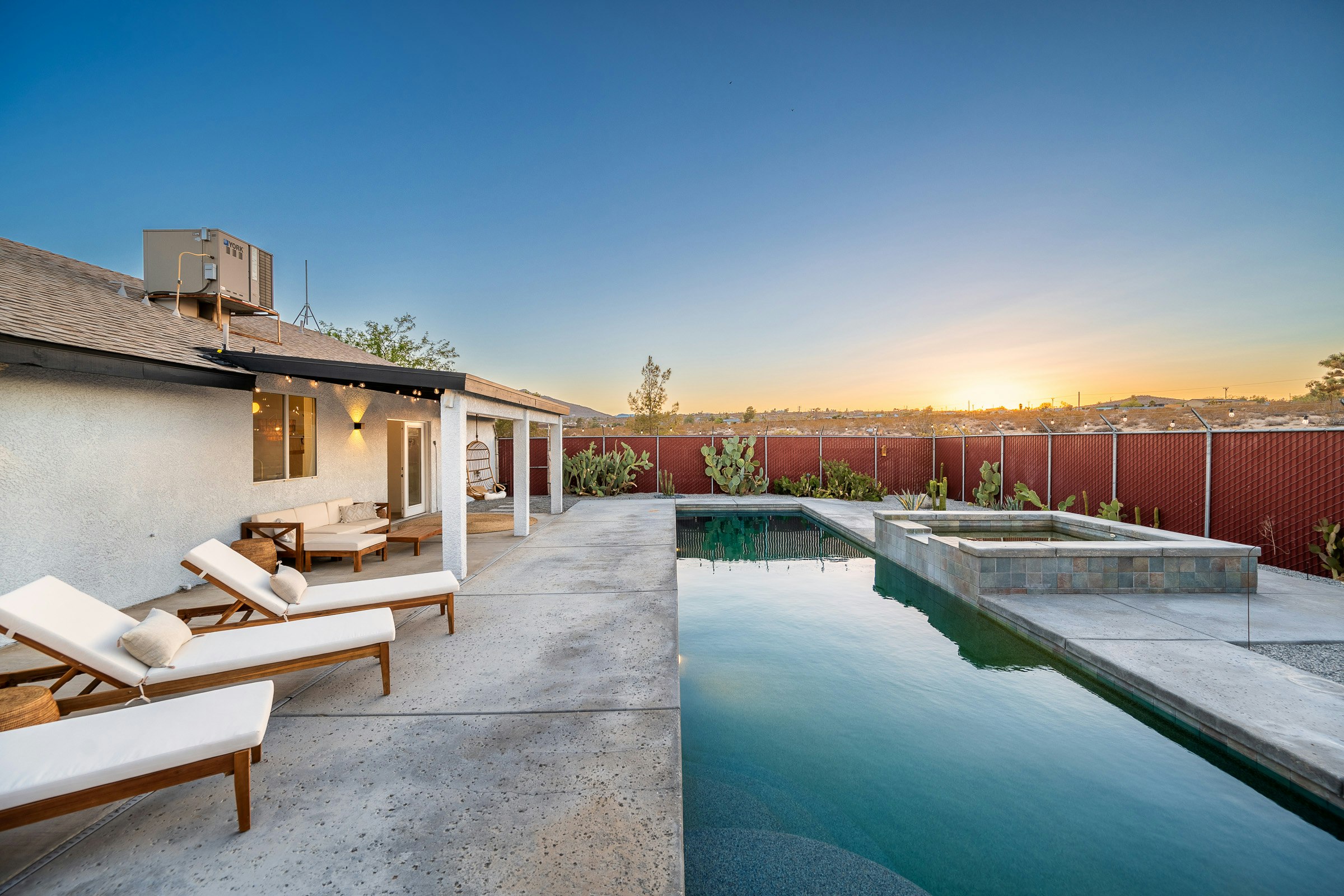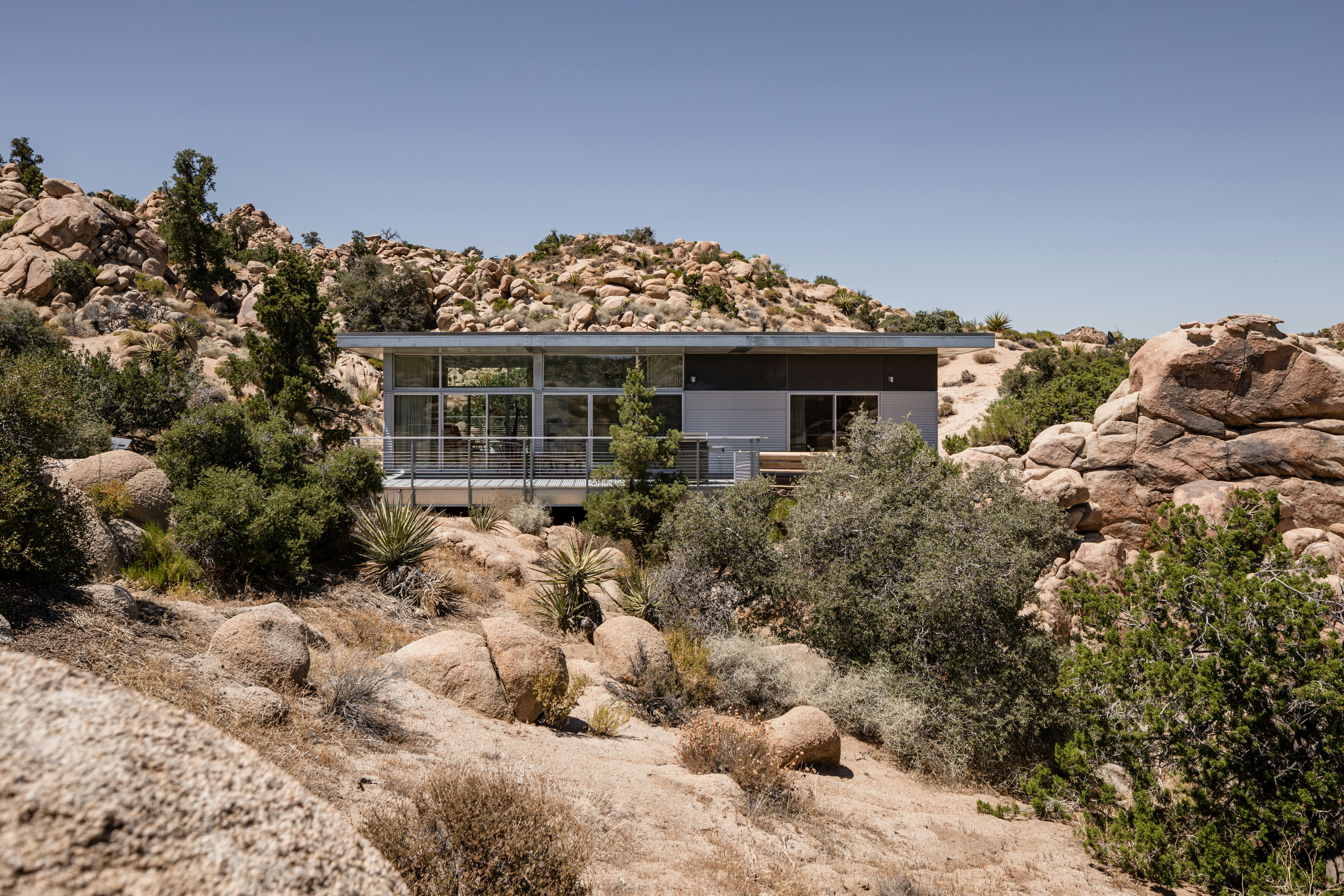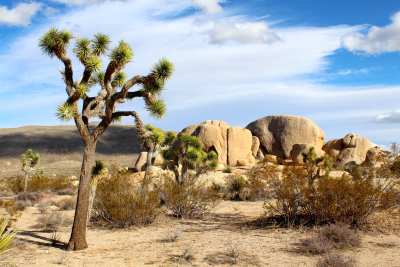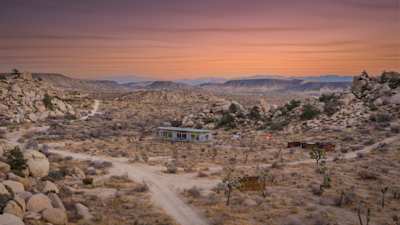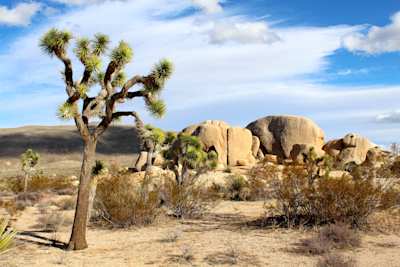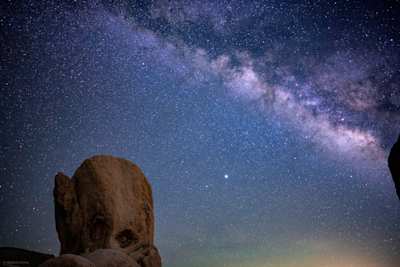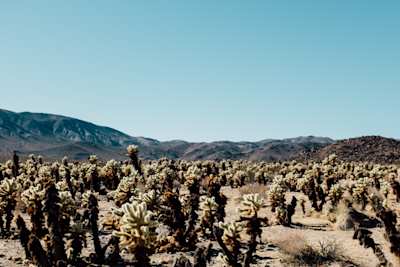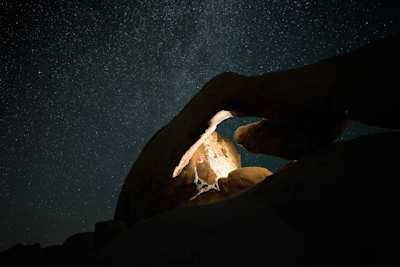Find Serenity in the Desert With These 10 Things To Do in Joshua Tree
From stargazing to rock climbing, discover the most scenic corners of California's famous national park.
~
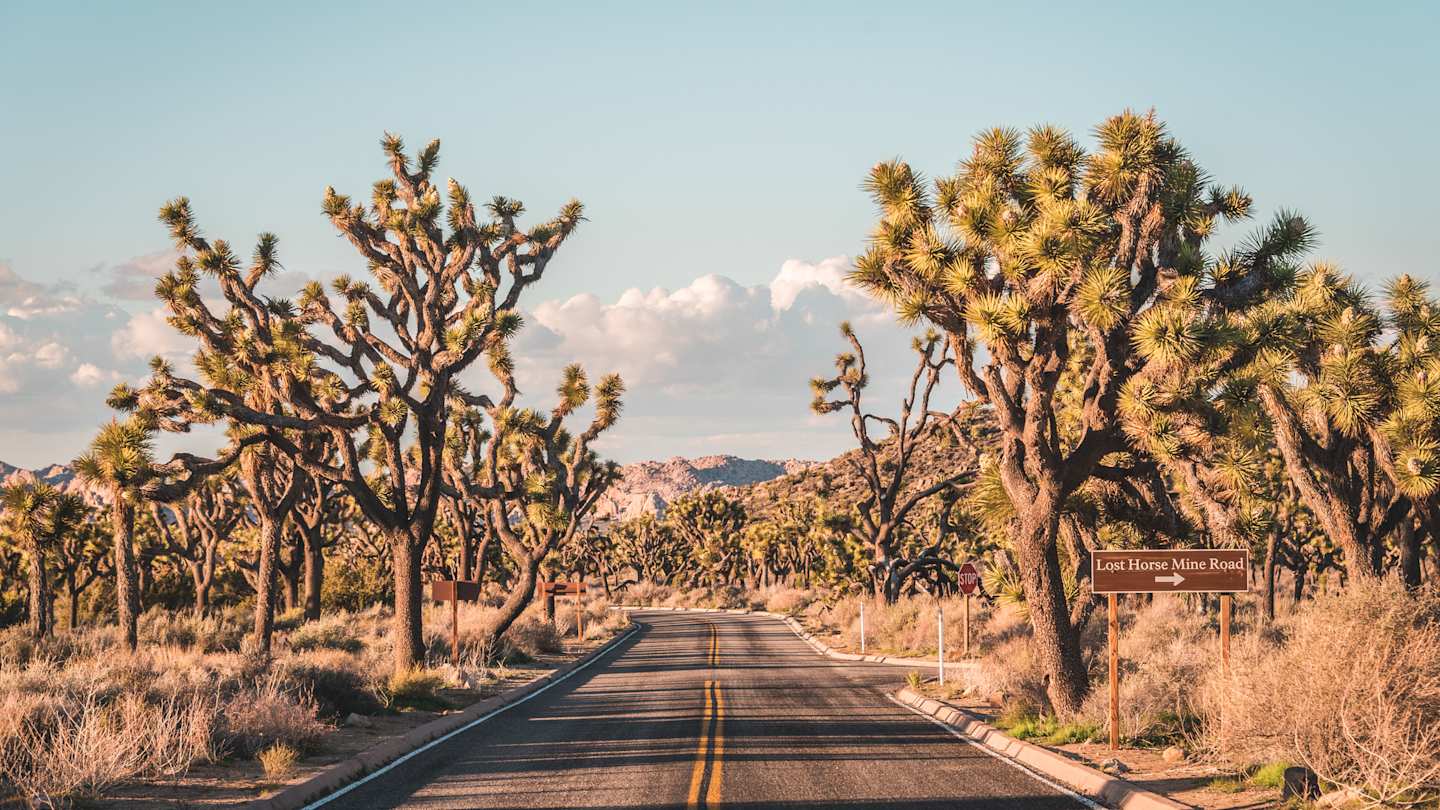
There's nowhere quite like the desert with its big open skies, raw natural beauty and tranquil surroundings – it's one of the best places to escape to if you're craving a peaceful retreat. Fancy one of those? Joshua Tree National Park is the best choice. Named after its trees which look like they've jumped straight out of a Dr Seuss book, Joshua Tree serves up some of the most unique scenery you'll ever set eyes on. Our travel experts at Plum Guide have all the inside knowledge on this wonderful part of California and are here to help you create the perfect itinerary. Take a look at our guide to the top things to do in Joshua Tree.
Visit the Cholla Cactus Garden
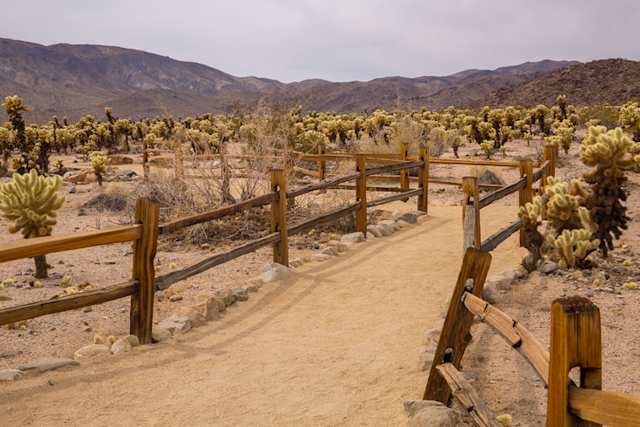
Dirt path leading through the Cholla Cactus Garden Nature Trail, Joshua Tree National Park
One of the most unique attractions in Joshua Tree is the Cholla Cactus Garden. These fuzzy cholla cacti, also known as the 'teddy bear cactus', are between 1 and 2 metres tall and covered in fluffy yellow-hued needles. Stretching for almost 10 acres, the garden is a wonderful place to walk around. We recommend visiting at sunrise or sunset when the rays cause the needles to seemingly glow. It's a truly spectacular sight, especially with distant mountains in the backdrop. But do be careful, as brushing against them will cause part of the cactus to break off and embed in your skin – there's even a first aid kit by the entrance as so many people get these cactus spines in them.
Go rock climbing
Joshua Tree is a world-renowned rock climbing destination, with over 8,000 climbing routes. The white quartz monzogranite’s rough surface provides a very good grip, and there is something here for all levels. Experienced climbers can tackle the routes on their own – if you’re a beginner, it’s a good idea to take lessons at the local climbing schools and head out with professional guides.
Joshua Tree is a year-round rock climbing destination, but spring and autumn are particularly popular when temperatures are milder. Some of the most popular spots are the rock formations of Hidden Valley, Intersection Rock, Quail Springs, Hall of Horrors and Lost Horse, with its steep and challenging climbs. If bouldering is more your thing (rope-free climbing on small rocks which aren’t high off the ground), Wonderland of Rocks features a maze of boulders and rock formations.
Take a hike
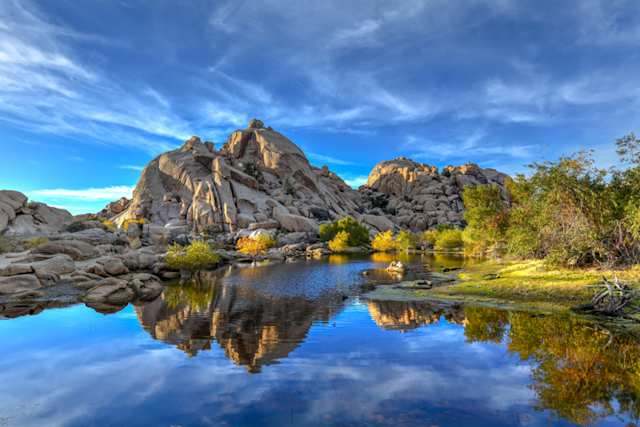
Barker Dam and boulders reflected in the water at sunset, Joshua Tree National Park
It comes as no surprise that hiking is one of the best things to do in Joshua Tree. There are a wealth of trails within the park, ranging from short walks to long treks. If you’re looking for something the whole family can enjoy, the Barker Dam Nature Trail is a 2-kilometre loop that takes you past the namesake trees, rock formations and desert landscapes. For something a little longer, 49 Palms Oasis is just under 5 kilometres and leads you through a peaceful palm oasis with stunning views of the desert. Those who are up for a challenge can tackle the Ryan Mountain trail. It may only be a 5-kilometre route, but its steep gradient and exposed nature will definitely have you breaking a sweat. But, if you’re up for it, the views from the top are some of the best in the park.
Spot wildlife
It may appear uninhabitable, but Joshua Tree provides fantastic wildlife-watching opportunities. The area around Barker Dam is a great spot to catch glimpses of bighorn sheep, birds and reptiles in the early mornings and late afternoons. During the spring and autumn, desert tortoises can be seen around Cottonwood Spring, whereas lizards and snakes tend to sun themselves on rocks along the Lost Palms Oasis trail. Other wildlife that you can see include foxes, coyotes, rabbits, golden eagles, bats and even mountain lions, with notable spots being Keys View, Boys Scout trail, Willow Hole trail and Quail Springs. Scorpions, tarantulas and rattlesnakes are venomous, so always look before placing your hands and feet and avoid stepping into hidden places.
Marvel at the night sky
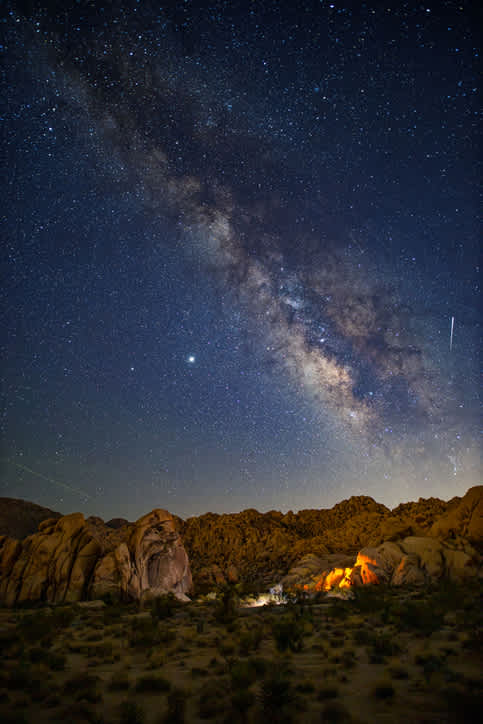
The Milky Way in the star-dotted night sky, Joshua Tree National Park
One of the most romantic things to do in Joshua Tree is stargazing. With no light pollution, the park has been awarded Dark Sky Park status by the International Dark Sky Association. The silhouette of the Joshua trees against the stars makes for an unforgettable view. While any part of the park will give you fantastic night sky scenery, there are several particular areas which serve as exciting viewpoints – these include Skull Rock, Cap Rock and the Ocotillo Patch. You can even go for a drive and stop at the many roadside pullouts to admire the Milky Way. If you happen to be visiting in the autumn, don’t miss the Night Sky Festival, where you can take part in astronomy lectures, educational tables, solar viewing and tours at Sky’s the Limit Nature Center and Observatory.
Explore on horseback
Another popular way of getting around the national park is on horseback. There are about 400 kilometres of equestrian trails weaving across open desert, along canyons and over passes. Most of the trails are waymarked and easy to follow, and those in the Black Rock Canyon area are the most popular for horseback riding. There are plenty of ranches and stables offering guided rides, including Cottonwood Canyon Ranch in the southern part of the park, Smoke Tree Stables just outside the park’s south entrance, and Pioneertown Stables near the park’s west entrance.
Step back in time at Keys Ranch
One of the most intriguing attractions in Joshua Tree is Keys Ranch. Nestled in a remote, rocky canyon, this is the former homestead of William F. Keys, who settled here in the early 1900s. Between October and May, you can take a guided tour to learn more about the lives of the Keys family out here in the harsh desert environment. You’ll also get to see the ranch’s historical buildings, including the family home, schoolhouse and workshop, as well as artefacts and tools from the ranch.
Take a scenic drive
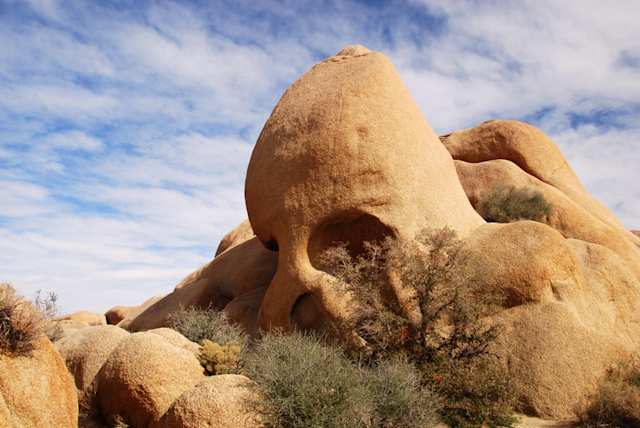
Skull Rock, a boulder shaped like a human skull, in Joshua Tree
If you’re short on time but want to squeeze in as many sights as possible, there are several drives you can do that take you through some of the desert's best scenery. One of the most popular 4WD drives in the park is Geology Tour Road, a 29-kilometre road leading you through geological marvels like ancient lava flows and rock formations. Another popular route is the Park Boulevard which runs from the West Entrance to the North Entrance of the park. It takes a couple of hours to drive, and you’ll get to see many of the park’s iconic landmarks including Skull Rock, Jumbo Rocks and the Cholla Cactus Garden. If you want to experience the magnificent views but don’t fancy a hike, you’ll be pleased to know that you can drive up to Keys View at the top of the Little San Bernardino Mountains, where you can enjoy panoramic views of the Coachella Valley, Salton Sea and Mount San Jacinto.
Capture killer photographs
Joshua Tree is a photographer’s playground, with its unique landscape providing a stunning backdrop for novice and professional photographers alike. There’s something for every kind of shutterbug, whether you’re into astrophotography, wildlife photography or landscape photography. One of the best times to shoot in the park is at sunset, when the surroundings are basked in an orange glow. Hidden Valley is a particularly photogenic spot, with a dense population of Joshua trees and unusual rock formations. If you’re an early riser, Arch Rock is a beautiful place to capture as it acts as a natural frame for the morning sun rising over the horizon.
Relax in Cottonwood Spring Oasis

Fan palm trees and rocky boulders along the Lost Palms Oasis Trail, Joshua Tree
One of the most picturesque parts of the park is Cottonwood Spring Oasis. This natural oasis is an important source of water for the desert, pushing over 500 gallons of water a day up to the surface. Surrounded by tall, hairy fan palms and other lush vegetation, the oasis provides a habitat for many animal species, especially birds like warblers, woodpeckers and hummingbirds. As well as its natural beauty, Cottonwood Spring Oasis was frequented by various indigenous groups – most notably the Cahuilla and Chemehuevi, who used the spring as a source of water and food. You can discover more about the area’s history with the signs and exhibits along the trail which runs through the oasis. It's also the starting point for the Lost Palms Oasis Trail, a 7.5-mile hike that's one of the park's most popular routes.

